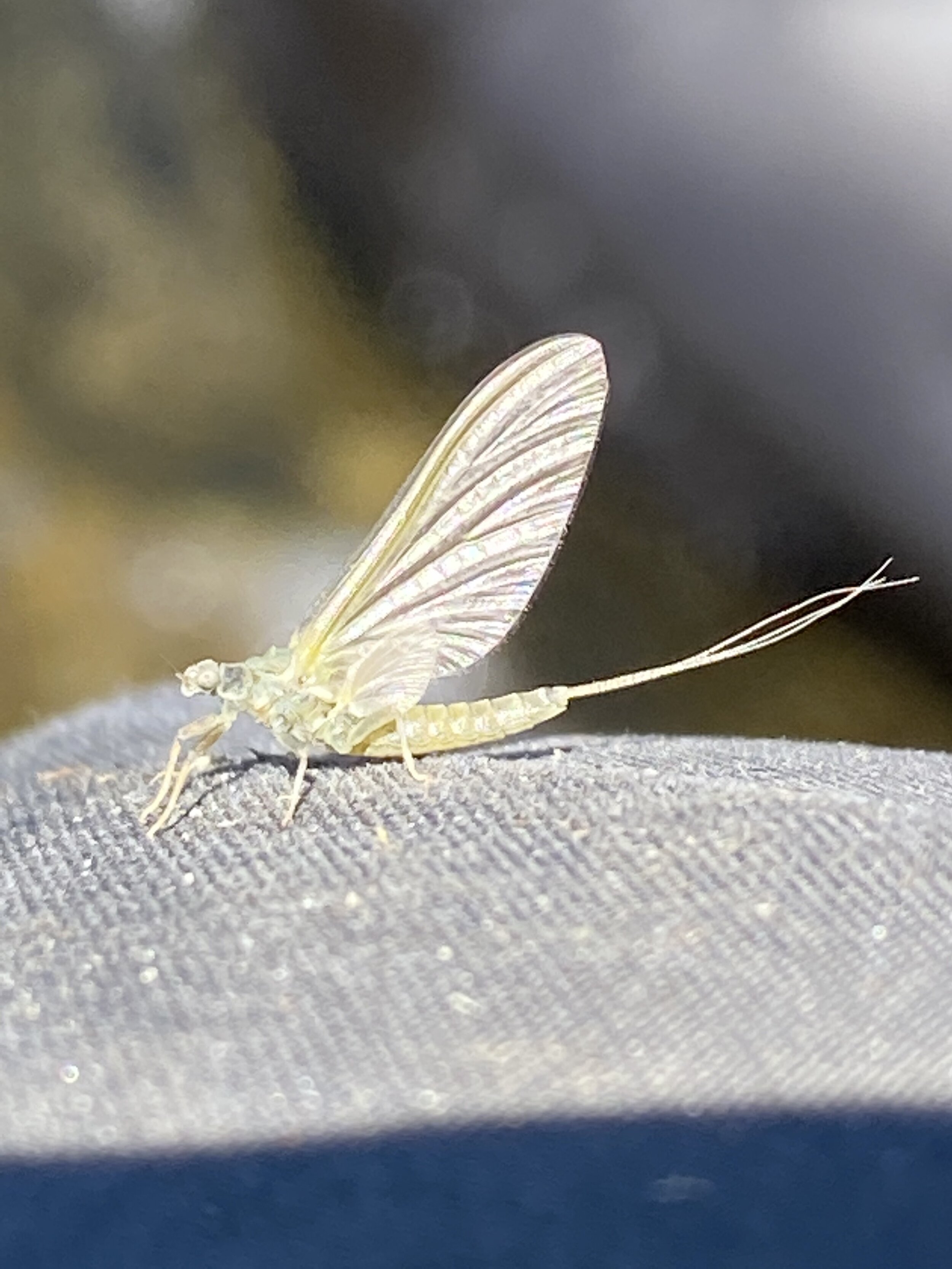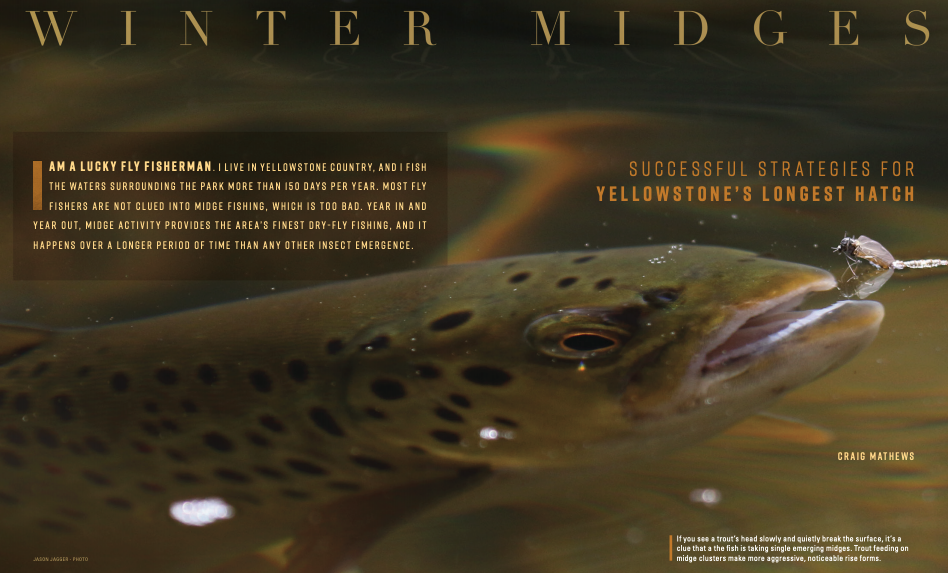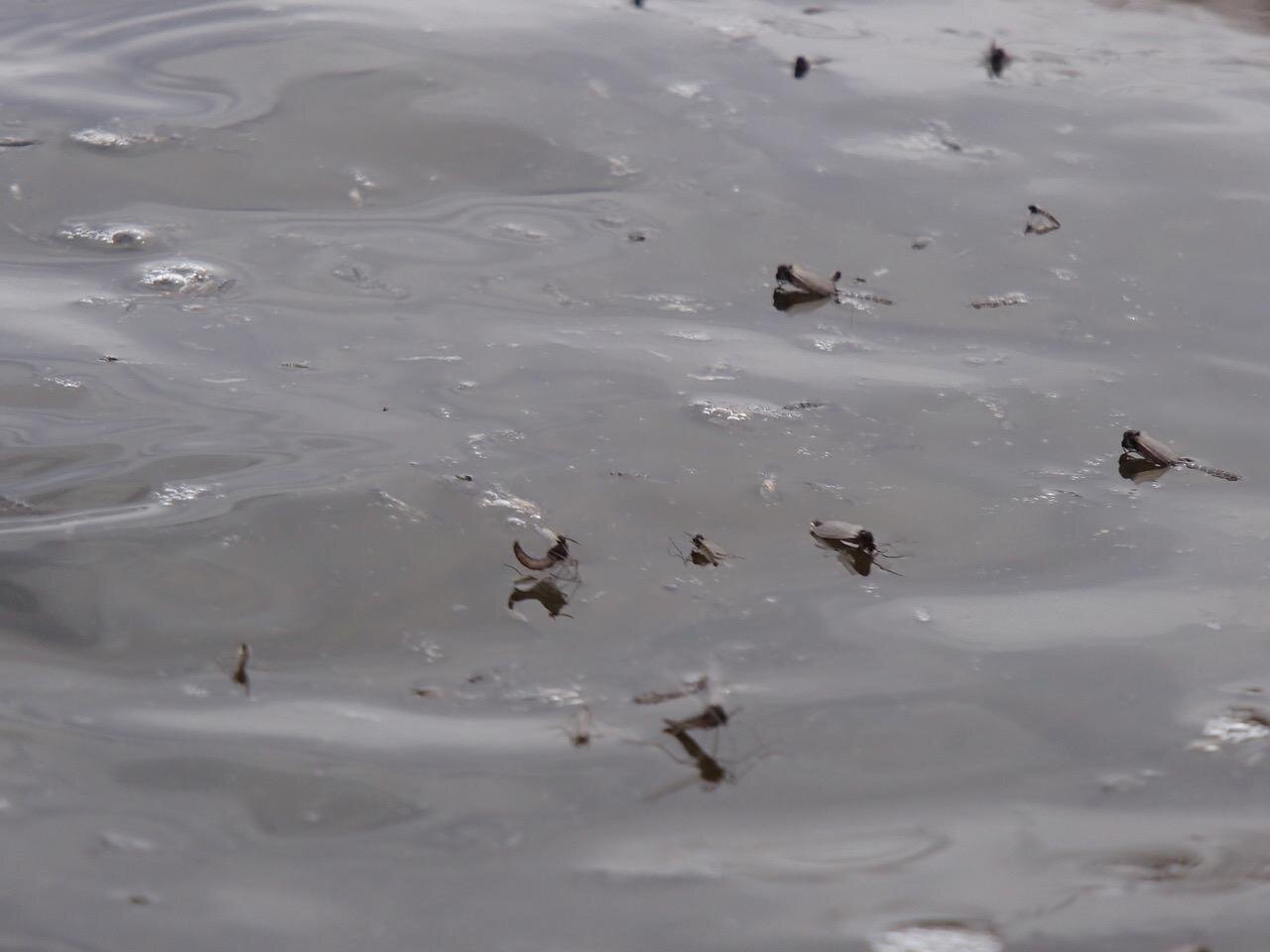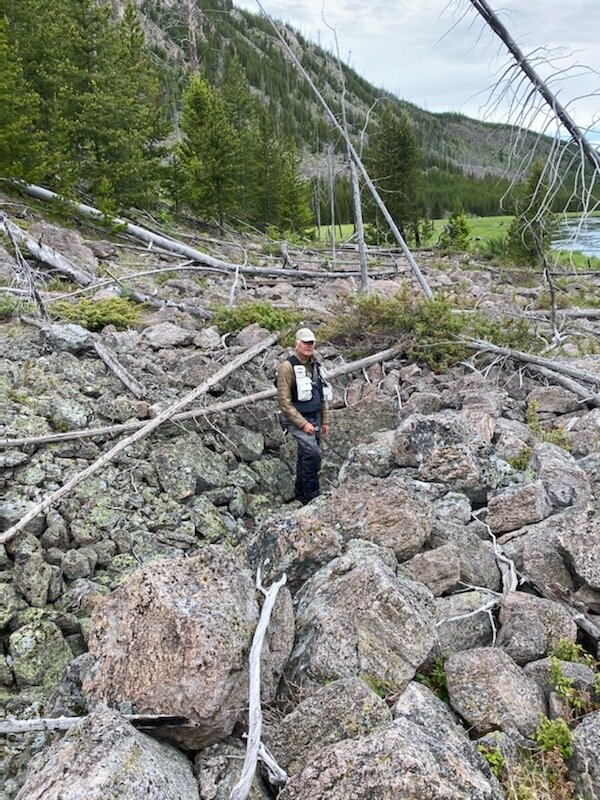PMD Mayfly.
Last week we saw some good dry-fly fishing on Yellowstone Park's Firehole and Madison Rivers. Pale Morning Duns and caddis brought fish to the surface during their emergences, but we could use a cloudy/rainy day to bring on heavy emergences of the mayflies that result in some of the finest dry-fly fishing of the year.
Young moose racing us.
Yesterday morning we got into a race with a young moose that ran along side our vehicle as we headed to a native fish and bear program meeting with JD Davis of "Yellowstone Forever”. Jackie and I served on the Board of Directors of Yellowstone Forever, formerly Yellowstone Park Foundation, for many years and continue to work with them on the awesome programs they fund in the Park. Please help fund YF programs if you can by sending a few bucks their way!
A sleeper late day fishing bet is the Madison River between Quake Lake and there West Fork, 8pm to dark, when tiny midges bring big trout to the surface. #22-24 Zelon and Scotty’s Midges are the best flies to present to the rising fish. You see the photo below of Terry landing a nice rainbow on a Zelon Midge at $3 Bridge this week.
I hope to see you on the river soon!
My friend Terry with a nice Rainbow trout he took on a midge below 3$ Bridge.
Nice brown trout I took on a PMD #18 Sparkle Dun on the Madison River in Yellowstone National Park.






















